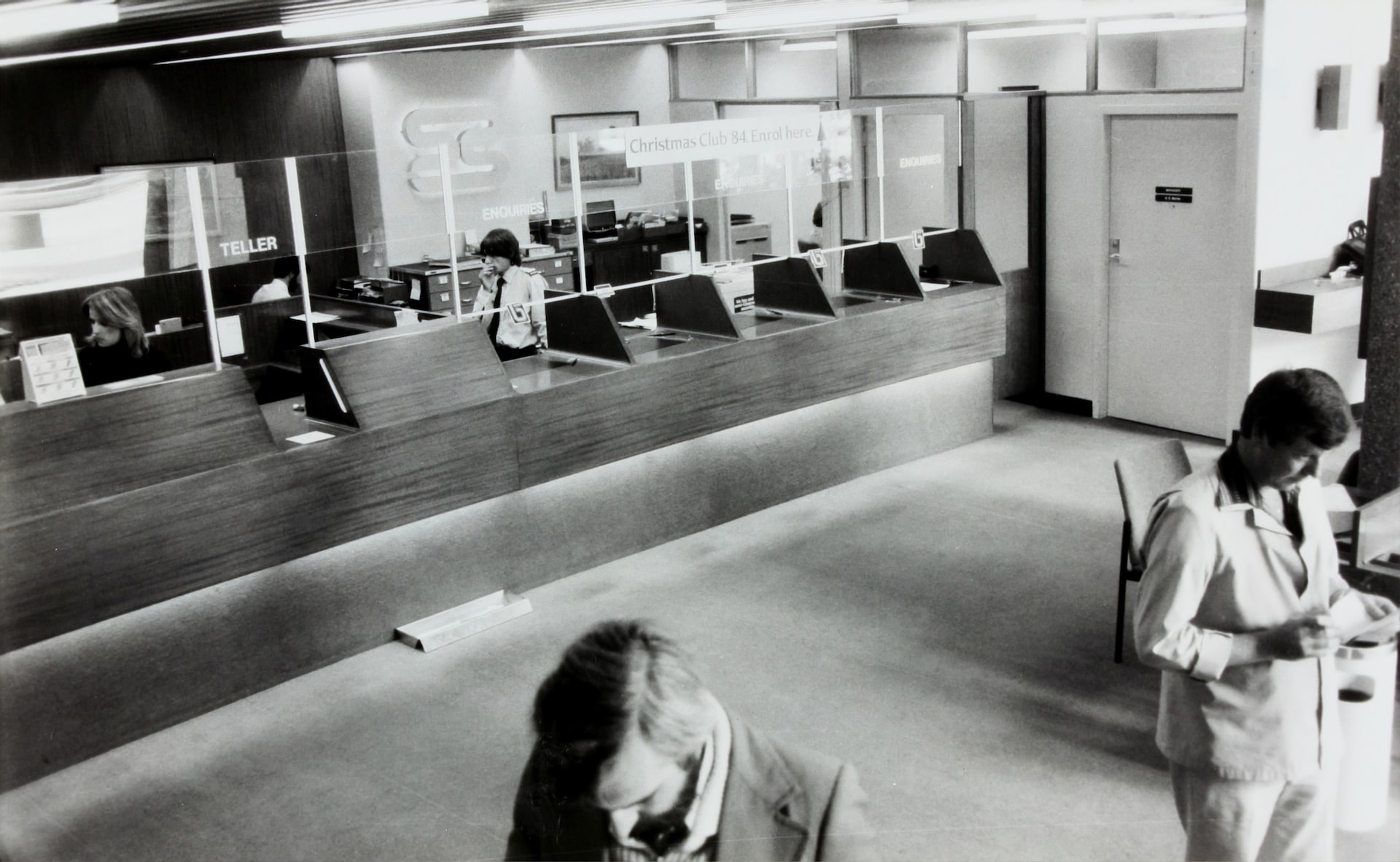Opening a bank account is the starting point to building wealth. The funds in your account receive protection from the Federal Deposit Insurance Corporation (FDIC), and it’s easier to transfer cash into your portfolio. Of course, those transfers can compound over time if your investments perform well, but you can grow your money in a bank account with zero risk.
Banking gets straightforward once you set up an account, but it can feel confusing when starting out. Some people who are opening bank accounts for the first time aren’t sure which type is best. Should you go for a checking account, savings account or both? It depends on the purpose the account will serve and your money goals. This article will explore the advantages and disadvantages of each account. Knowing the key details about each account will help you make better decisions with your finances.
What is a Checking Account?
A checking account is a type of bank account offered by traditional banks, credit unions, online banks and some financial technology platforms. This account is secured by the Federal Deposit Insurance Corporation up to the first $250,000. If you have more than $250,000 in one checking account, you can create a second checking account and split the funds. That way, both funds stay below the $250,000 maximum coverage and allow you to safeguard more of your money.
How Do Checking Accounts Work?
Checking accounts thrive by providing you with easy access to your money. They’re primarily used to make everyday purchases at retail locations and online using a debit card. Each checking account comes with a debit card that connects to your account’s funds. You will incur an overdraft fee if you overdraw your account, but it can keep you out of credit card debt. Checking account holders can also access their funds by writing a check or making withdrawals using ATMs.
Checking accounts are also used to receive direct deposits. In addition, many employers ask for a worker’s checking account information to speed up money transfers. Plus, you can initiate cross-account transfers or send funds to accounts belonging to yourself or someone else who isn’t housed at your financial institution.
This last point is important because some people open bank accounts to capitalize on short-term rewards. For example, some banks give you $100 if you deposit a certain amount of money within the first 90 days of opening your account. Checking accounts are better for capitalizing on these types of opportunities.
What is a Savings Account?
Savings accounts are available from the same financial entities as checking accounts. However, they’re designed to store funds for an extended period. Most people set up savings accounts for their emergency funds and retirement planning. These accounts are better for long-term goals than covering everyday expenses.
How Do Savings Accounts Work?
When you deposit money into a savings account, you’ll generally earn a return after it sits for an extended period. This is known as the annual percentage (APY), but it’s usually on the lower end unless you open a high-yield savings account. While rates will vary, you will earn more with a savings account than with a checking account.
Also, keep in mind that you can’t use checks or debit cards with savings accounts. Instead, you’ll need to request an ATM card to make withdrawals, initiate a transfer online or visit a local branch. Still, most financial institutions limit withdrawals to six each month before charging additional fees. As a result, savings accounts are ideal for individuals who are looking to store money away so it can grow, especially if you don’t need the money for several years.
The Difference Between a Checking and Savings Account
Main Purpose
- Checking account: receive direct deposits, pay bills and make everyday purchases
- Savings account: grow your money over an extended period for a long-term financial goal
Withdrawal and Transfer Limits
- Checking account: none
- Savings account: six per month (withdrawals)
Interest
- Checking account: minimal, if any
- Savings account: varies by the financial institution
Maintaining Balance
- Checking account: varies by the financial institution
- Savings account: varies by the financial institution
Fees
- Checking account: monthly maintenance fee, ATM fee (if you withdraw funds at an out-of-network ATM), overdraft fees and NSF fees
- Savings account: monthly maintenance fee, ATM fee (if you withdraw funds at an out-of-network ATM), excessive withdrawal fee, minimum balance fee (if your account falls below the specified threshold)
Access
- Checking account: spending and withdrawals up to your balance are permitted, but daily spending limits apply
- Savings account: six fee-free withdrawals per month. Some savings accounts like CDs have higher interest rates but limited access. You only get access to finds in a CD once the CD matures. It’s possible to withdraw funds before the CD term ends, but that usually results in a penalty fee.
Other Features
- Checking account: debit cards, paper checks, online bill pay, direct deposit, mobile banking with remote check deposit, overdraft protection
- Savings account: direct deposit, mobile banking
- Banks have various features like spending insights, investing capabilities, and more. Make sure you review a bank’s features before creating a checking or savings account with them.
How to Choose Between a Checking or a Savings Account
When deciding if a checking or savings account is best, here are some questions to ponder:
- What will be the primary purpose of the account? A checking account makes more sense for short-term purchases. If you are planning for retirement, a down payment, or another long-term commitment, a savings account is the better choice.
- Is it a must that you earn interest on your money? Savings accounts are better for earning interest. If you don’t need your cash for a while, it makes sense to put your funds in a money market account or certificate of deposit (CD). If you don’t value interest as much and want easy access to your cash, a checking account may make more sense.
- Do you need access to a debit card? You can only get a debit card with a checking account. If you need this card, don’t start with a savings account.
- Will you be using the account to make purchases, pay bills or both? Bills and other purchases come up often. You may have to make more than six withdrawals each month to pay off everything. In that case, a checking account is the better choice.
- How many withdrawals do you plan to make per month? If you don’t plan on making more than six withdrawals per month, you can go with either account. However, you will need a checking account to exceed six withdrawals per month without worrying about fees.
When to Get a Checking Account
A checking account could be best if:
- You want to shop online or at stores using a debit card to make everyday purchases.
- You want to pay bills by check or electronically.
- You will likely need to make more than six withdrawals per month.
When to Get a Savings Account
You may want to open a savings account instead if:
- You want to build an emergency fund.
- You’re looking to save up to meet a long-term financial goal.
- You want to save up and make a big-ticket purchase in the future.
- You use a credit card for your purchases. This shouldn’t be the decisive factor, but if you use a credit card, you may not have as much need for a debit card or check writing. You can make a large payment on your credit card balance each month to stay within the limit of six withdrawals per month.
When to Have Both
Most people should have a checking and savings account. It doesn’t hurt to have both accounts set up. You don’t have to pay a fee to open each account as long as you fulfill the minimum balance requirement. Unfortunately, many banks, credit unions, and online banking platforms do not have minimum balance requirements to set up basic checking and savings accounts.
Most financial institutions allow you to set up both types of accounts. Many of them even let you create many bank accounts, which is helpful for managing your money. You can create separate bank accounts for retirement, emergency funds, vacation planning, everyday expenses, and other categories. Before creating a bank account with any financial entity, you should check their fees, features, and if you can open both types of accounts.
Which Account Should You Prioritize?
When you receive $1, you can only put that dollar in one bank account. Which bank account should that dollar go into? Consumers should assess their ability to cover everyday expenses when allocating funds.
If you need the money to keep up with everyday expenses and debt, you should prioritize your checking account. Although your checking account won’t have the best interest rate, you can cover expenses without getting close to the withdrawal limit or incurring a penalty fee.
Savings accounts do not provide the same flexibility, but they have some advantages over checking accounts. Consumers with enough cash to cover current expenses should put the money into a savings account. A traditional savings account, CD, or money market account will generate a higher return than a checking account. This money is less likely to be spent, and the interest you earn can help with everyday expenses. Depending on the interest rate you get, a savings account can be similar to a dividend stock without any risk of losing money.







